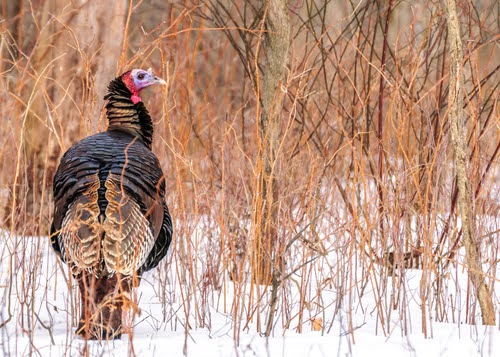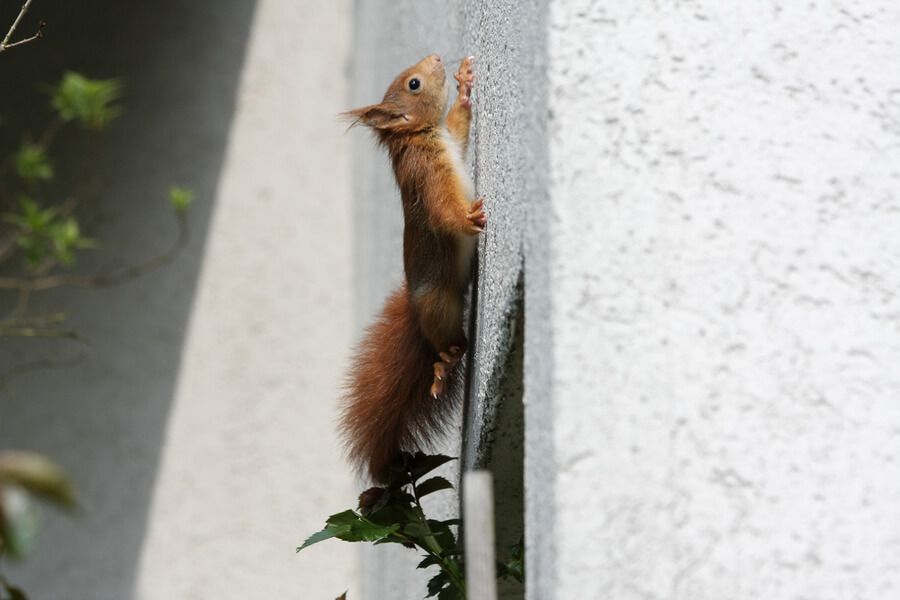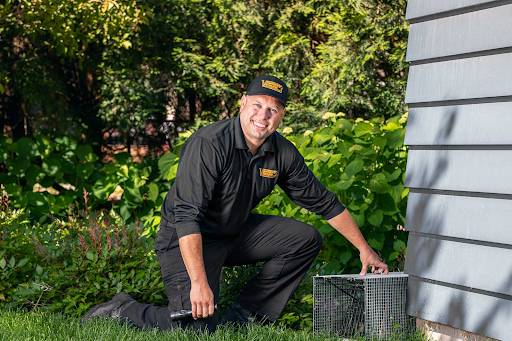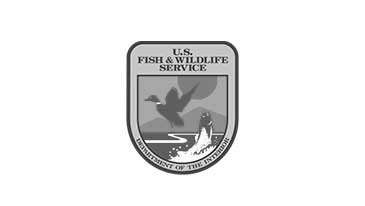During the winter months, many animals travel to warmer climates or nestle down somewhere cozy where they can snooze. But what about the wildlife that doesn’t migrate or hibernate? When heavy snow starts coming down, these animals have to get creative to acclimate. Here’s how four common animals spend the winter.
How Common Animals Survive the Winter
1. Birds
Contrary to popular belief, there are many birds that don’t migrate during the winter (downy woodpeckers, chickadees, turkeys, and more). Instead, they survive the cold of winter by finding shelter, grouping together, and fattening up.
During particularly snowy days, you may notice groups of birds hunkering down in “microhabitats.” Generally, these microhabitats are beneath something that can block out direct snowfall.
Snow can be a serious problem for birds because it covers up their meals. As snow continues to fall, birds may become more desperate for alternate sources. Birds will also risk traveling further to find shelter during snow storms. Their want for food and shelter may lead them into your garage or home.
2. Raccoons
During the colder months, raccoons enter a hibernation-like state called torpor; they can’t sustain it as long as true hibernators. They prepare for periods of torpor by building fat stores, especially in their large tails. As they lay dormant, these fat stores sustain them for long periods of time.
Every couple of weeks, raccoons have to get up in order to replenish their stores. If they happen to wake up during heavy snowfall, this can be difficult. Because raccoons are opportunistic scavengers, they rarely wander far from their dens, preferring to pick away at nearby food.
If raccoons can find a good food source, they may attempt to build a new den nearby. They are particularly fond of dumpsters, meaning homes and businesses are prime den spots for these animals.
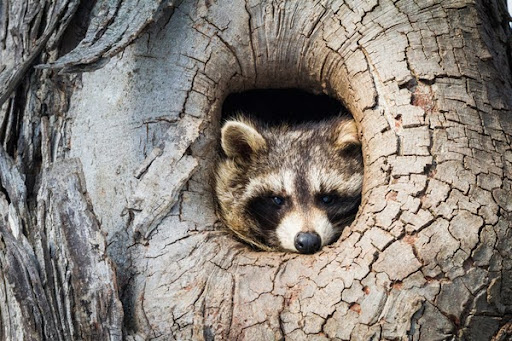
3. Opossums
Opossums have it rough during the winter. Their fur doesn’t provide much insulation, so it’s not uncommon for them to suffer from frostbite during particularly cold winters.
They spend fall lining their dens with grass and leaves to prepare for winter. Opossums usually attempt to wait out snow storms from inside their dens, entering a torpor similar to raccoons. Opossums typically prefer ground-level or below-ground dens but will use trees or elevated spots if opportunity arises.Opossums use warmer days to stock up on nearby food and shelter material. During winter, they’ll feed on garbage, bird seed, or anything else they can find.
4. Rabbits
Rabbits never hibernate or enter torpor. To survive, they eat. This means they stick close to consistent food sources like berry bushes or other plants. Rabbits stick together and seek out convenient shelter like porches or awnings.
Like other small mammals, they tend to stick together in winter. Rabbits can respond to snow storms in different ways:
- If they have a food source, they’ll find a shelter as close to it as possible. From there, they’ll wait for the snow to stop, emerging only when they have to eat.
- If they can’t find food or shelter, they’ll keep moving until they feel safe and have access to meals.
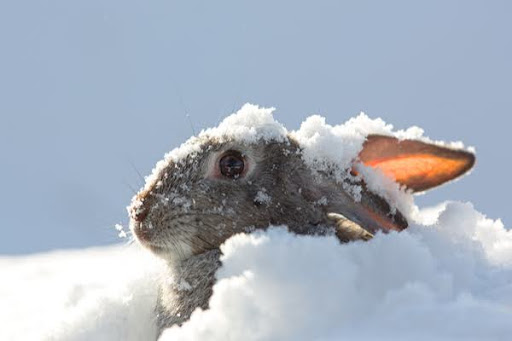
Keep Winter Wildlife Wild
The search for food and shelter will often bring these common animals in close proximity to people’s homes. It’s hard to blame them, but it doesn’t mean you have to tolerate it. If you’re having a wildlife problem this winter, contact Varment Guard. We’ll take care of your wildlife pest problem quickly and efficiently.

